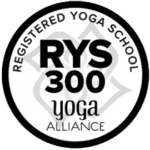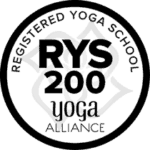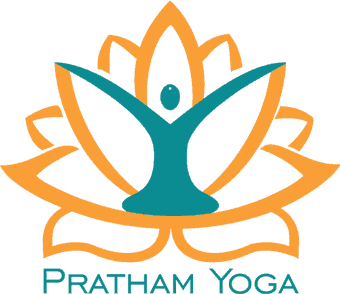Simple Tips for Perfecting Baddha Padmasana
Welcome to the world of Baddha Padmasana, where tranquility meets strength, and inner peace awaits. If you’ve ever found yourself captivated by the grace of yoga, then mastering Baddha Padmasana, or Bound Lotus Pose, is an essential journey to embark upon.
Picture this: a serene moment, where your body effortlessly intertwines, finding balance and harmony amidst life’s chaos. That’s the magic of Baddha Padmasana – a gentle yet powerful asana that not only stretches your body but also calms your mind.
But fear not, perfecting this pose doesn’t have to feel like an impossible task. In fact, with some simple tips and tricks, you’ll be well on your way to mastering Baddha Padmasana in no time. Whether you’re a seasoned yogi or a curious beginner, join us as we explore the art of Bound Lotus Pose and uncover the secrets to finding comfort, stability, and grace within your practice. Let’s dive in and discover how to make Baddha Padmasana a seamless part of your yoga journey.

Exploring the Origins of Baddha Padmasana
Baddha Padmasana, also known as Bound Lotus Pose, has its roots deeply embedded in ancient yoga traditions. This serene posture finds its mention in classical yoga texts like the Hatha Yoga Pradipika and the Gheranda Samhita, where it was revered for its ability to balance both body and mind.
In Sanskrit, “Baddha” translates to “bound” or “locked,” while “Padmasana” refers to the Lotus Pose. Combining these elements, Baddha Padmasana signifies a union of stability and tranquility.
Historically, yogis practiced Baddha Padmasana as a means to prepare the body for long periods of meditation. It was believed that by binding the legs in a lotus position while maintaining an upright posture, practitioners could channel their energy inward and achieve a state of deep concentration.
Today, Baddha Padmasana remains a cherished pose in modern yoga practice, valued not only for its historical significance but also for its ability to foster inner peace and physical alignment.
Mastering Baddha Padmasana: A Step-by-Step Guide
Step 1: Find Your Foundation
Begin by sitting comfortably on your yoga mat in a cross-legged position, known as Sukhasana or Easy Pose. Take a moment to ground yourself, feeling your sit bones rooted into the mat and your spine elongated.
Step 2: Bring Your Legs Into Lotus
Slowly bring your right foot onto your left thigh, allowing the sole of your right foot to face upward. Then, bring your left foot onto your right thigh in the same manner. If this feels challenging, you can start with a Half Lotus by placing one foot on the opposite thigh and the other foot beneath the opposite knee.
Step 3: Clasp Your Hands
Reach your arms behind your back and clasp your hands together. If this is too intense, you can simply place your hands on your knees.
Step 4: Lengthen Your Spine
As you inhale, lengthen your spine, lifting through the crown of your head. Feel your chest open and your shoulders relax down away from your ears.
Step 5: Hold and Breathe
Stay in this pose for 3-5 deep breaths, maintaining a steady and smooth breath. With each exhale, allow yourself to relax deeper into the pose.
Step 6: Release with Care
To release, gently release your hands and carefully unwind your legs from the lotus position. Shake out your legs and take a moment to notice how you feel after practicing Baddha Padmasana.
Unlocking Wellness: The Many Benefits of Baddha Padmasana
Improved Flexibility
Baddha Padmasana, or Bound Lotus Pose, gently stretches the hips, knees, and ankles, enhancing flexibility over time. This increased flexibility can ease discomfort from tight muscles and promote better mobility in daily activities.
Enhanced Concentration
The focus required to maintain balance in Baddha Padmasana helps to sharpen concentration and cultivate mindfulness. By bringing attention to the present moment, practitioners can experience a sense of mental clarity and inner peace.
Stress Relief
As a calming pose, Baddha Padmasana soothes the nervous system and reduces stress levels. The gentle pressure applied to the abdomen can also aid in digestion and alleviate digestive issues associated with stress.
Strengthens Core Muscles
While seemingly passive, Baddha Padmasana engages the core muscles to maintain stability and support the spine. Regular practice can strengthen the abdominal muscles, leading to better posture and a more robust core.
Promotes Relaxation
Baddha Padmasana encourages deep breathing and relaxation, making it an excellent pose for unwinding after a long day. The gentle compression on the lower back can release tension and promote a sense of calmness throughout the body and mind.
200 Hour TTC in Rishikesh with Pratham Yoga
Are you ready to dive deep into the world of yoga? Join Pratham Yoga for an enriching 200 hour Yoga Teacher Training Course (TTC) in Rishikesh, India. Our program is designed to empower you with the knowledge and skills to become a certified yoga teacher.
Immerse yourself in the serene surroundings of Rishikesh, known as the yoga capital of the world. At Pratham Yoga, our experienced instructors will guide you through traditional Hatha and Ashtanga practices, meditation, pranayama, and more.
Discover the Path: Pratham Yoga’s 300 Hour Yoga Teacher Training
Experience an amazing journey with Pratham Yoga’s 300 hour Yoga Teacher Training in Rishikesh, India. Our program smoothly combines the timeless wisdom of Ayurveda with advanced yoga techniques. Immerse yourself in Rishikesh’s serene ambiance while deepening your practice and becoming a qualified yoga instructor. Our immersive course is led by experienced instructors and covers yoga theory, asanas, pranayama, and meditation. Join our supporting community to maximize your teaching potential.
Mastering Baddha Padmasana is within your reach with these simple yet effective tips from Pratham Yoga. Remember to start slowly, allowing your body to adapt to the pose gradually. Focus on proper alignment and engage your core muscles to support your spine and hips.
Take deep, mindful breaths to cultivate a sense of calm and presence in the pose. Additionally, listen to your body and honor its limitations, avoiding any pain or discomfort. Consistent practice is key, so dedicate regular time to refine your technique and deepen your flexibility.
Celebrate your progress along the way, acknowledging the journey as part of the practice itself. With patience, perseverance, and the guidance of Pratham Yoga, you’ll soon find yourself experiencing the full benefits of Baddha Padmasana – a harmonious union of strength, flexibility, and inner peace. Start your journey towards mastering Baddha Padmasana with Pratham Yoga today, and let the transformation begin.


